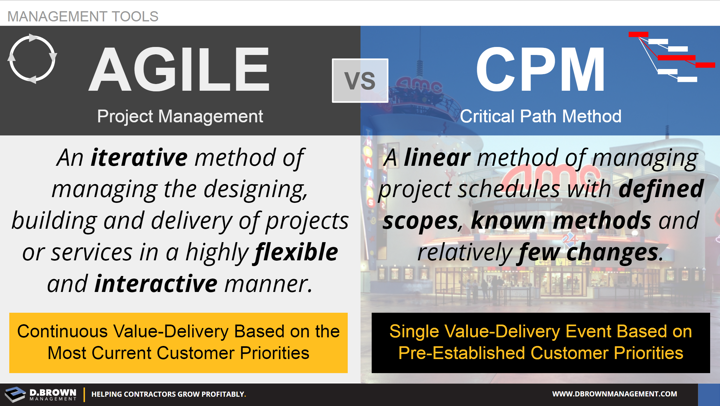CPM works very well when the components of the design and the project are mostly known to all responsible parties. CPM focuses on either a single value-delivery event such as the completion of a building or in major phases such as turning over a floor at a time.
CPM does not work as well in situations where there are significant “Known-Unknowns” about the plan CPM really breaks down when there are “Unknown-Unknowns”:
- The final destination isn’t crystal clear; even to the leader
- The path to get there has unknowns
- The tools and tactics required to get there aren’t known to the team
In these situations more agile management methods are required either in conjunction with or to replace CPM:

